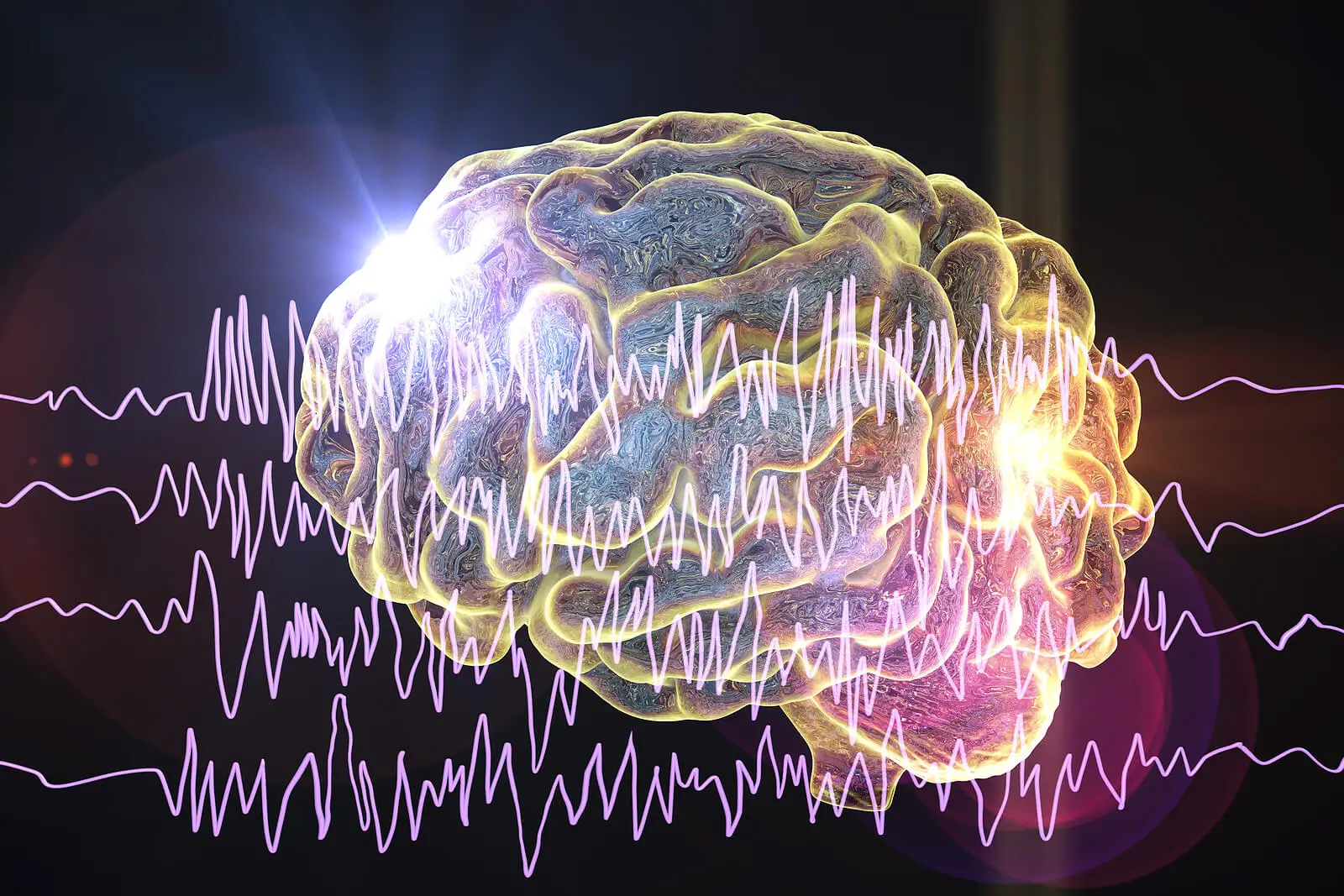Menopause and Sleep Disorders: What Is the Link?


Written and verified by the doctor Maryel Alvarado Nieto
Menopause is a normal stage in a woman’s life, constituting the cessation of menstrual cycles and the end of fertility. During the menopause period, some common symptoms appear, such as sleep disorders. Therefore, this article will cover its possible causes and associated risk factors.
It is important to define menopause, as there is some confusion about the concept. The term refers to the permanent cessation of menstruation and it is only possible to recognize it 12 months after the last menstrual period.
It appears naturally around the age of 50. During this transition in a woman’s life, sleep problems often arise.
What is sleep and why is it so important?
Sleep is a normal state in which both perceptions and responses to external stimuli are diminished. However, although it may seem like inactivity, the truth is that it is a crucial moment for the correct functioning of the organism.
The activation of various neuronal groups during sleep makes it possible to consolidate memory, regulate temperature and immunity, as well as control the release of certain neurotransmitters.
Like this article? You may also enjoy reading: 7 Tricks to Avoid Gaining Weight When You Reach Menopause
Phases of normal sleep
In general terms, sleep is divided into two distinct phases: REM and NREM. This nomenclature refers to rapid eye movements or to their absence, in which case an N for negation is added.
In turn, the NMOR phase is divided into four stages. Among them is deep sleep, which is considered the restorative component of going to sleep.
A sleep cycle begins with a period of drowsiness (stage I of the NREM phase). The waves observed in an electroencephalogram (EEG) gradually change as the different stages elapse.
After this, the person enters a period of rapid eye movements, thus completing a sleep cycle, which is repeated again. It is important to note that the stages have different durations throughout the night.
Modifications in the sleep pattern in women during menopause
The sleep pattern considered normal comprises 8 hours of nightly rest, divided into 4 or 5 sleep cycles. Therefore, the remaining 16 hours of the day constitute the waking period. This alternation between being asleep and awake is known as the circadian sleep-wake rhythm.
In older people, it’s common to observe shorter periods of deep sleep and reduced REM phases, with prolonged latencies. This leads to a decrease in the total duration of sleep, in addition to frequent awakenings.
For this reason, some consider that during menopause, sleep disorders are part of women’s daily life.

Menopausal changes related to sleep disorders
The end of reproductive life entails the appearance of various changes gradually until ovulation disappears completely. These changes affect different body functions, generating the characteristic symptoms of this period.
In menopause, sleep disorders seem to have a neuroendocrine origin. It’s necessary to know the mechanisms involved.
Hormonal changes in menopause
The best-known change in menopause is ovarian failure, i.e., the inability of the organ to produce sex hormones (estrogen and progesterone). Among the normal effects of ovarian sex hormones is the regulation of the release of gonadotrophins (FSH and LH) by the pituitary gland.
These molecules are, in turn, responsible for stimulating the ovaries to produce sex hormones. However, since they are decreased, the suppressive effect on the pituitary does not occur, causing FSH and LH to increase considerably.
Some authors state that FSH can increase by 10 to 20 times its value and LH by about 3 times. On the other hand, inhibin (another substance produced by the ovary) is now recognized as a hormone that suppresses the production of these gonadotropins. Because the ovaries are atrophic at menopause, inhibin also does not block pituitary release.
We think you may be interested in reading this, too: World Menopause Day: Let’s Give it the Importance it Deserves
Neurotransmitters and menopause
The substances responsible for regulating the nervous system are known as neurotransmitters. With menopause, these molecules are also affected.
First of all, noradrenaline is involved in the release of GnRH (a hypothalamic substance responsible for stimulating the production of gonadotrophins by the pituitary gland). The secretion of noradrenaline is increased in menopause, causing an increased release of GnRH. And, therefore, this also affects the gonadotropins.
This seems to play an important role in the modification of the sleep cycle in menopause. Since the REM phase is associated with GnRH release pulses. Therefore, women are more susceptible in this period to awakenings during rest.
On the other hand, deep sleep (NREM phase) is related to the release of serotonin. This neurotransmitter is diminished in menopause, which leads to a reduced ability to achieve deep and restful sleep.
The causes of sleep disorders in menopause
Although more than 40% of women experience sleep disturbances after menopause, the literature on the subject is scarce. In fact, some authors claim that the difficulties in obtaining a good night’s rest in these women are secondary to other disorders. Therefore, they propose that the underlying cause should be managed to improve sleep quality.
Vasomotor symptoms
Most women experience a transition to menopause that spans several years before menopause sets in. And it may continue for a few more years.
This period is called the climacteric phase and is known for the symptoms it produces, especially the popular hot flashes. Women report a sensation of heat that comes in the form of sudden waves, affecting the face and torso, and producing sweating.
Hot flashes usually last a few minutes. Because they can appear at night, they are considered a common cause of sleep disturbances.
Like this article? You may also like to read: How To Take Care of Yourself During Menopause
Emotional disorders
States of anxiety and depression also seem to be related to sleep problems in menopause. This is why emotional disorders are considered a risk factor.
In addition, it is known that with the aging process there is an increased risk of mood fluctuations, making the link between emotions and sleep more complex to elucidate. Therefore, much research is needed in this regard.

Other risk factors associated with sleep disorders in menopause
Climacteric women may have other underlying pathologies that alter sleep, such as the following:
- Hyperthyroidism
- Arterial hypertension
- Diabetes mellitus
The occurrence of painful chronic diseases, such as arthritis and carpal tunnel syndrome, should also not be underestimated. Or underlying sleep disorders, such as restless legs syndrome and obstructive sleep apnea.
Nocturia is common in menopause. This is the need to wake up at night to urinate.
What can be done to improve your nighttime rest during menopause?
Although menopause is associated with sleep disorders, some lifestyle changes can be made to lessen their impact. Likewise, there are studies that propose the use of alternative therapies to hormone replacement to treat climacteric symptoms.
However, if the alterations persist, it’s necessary to go to the doctor for a proper assessment. Among the general recommendations are the following:
- Reduce your caffeine consumption.
- Keep the room cool and dark.
- Eat dinner at least two hours before going to bed.
- Eliminate toxic habits, such as alcohol and tobacco.
- Take a warm or hot shower before going to bed.
- Try to go to bed and wake up at the same time every day.
- Do regular physical exercise, but well before bedtime.
On the other hand, it’s necessary to give sleep disorders the relevance they deserve, since a restful night’s sleep is essential for the proper functioning of the body. This applies to menopause and to any other age.
All cited sources were thoroughly reviewed by our team to ensure their quality, reliability, currency, and validity. The bibliography of this article was considered reliable and of academic or scientific accuracy.
- Domarus, A.; Farreras, P.; Rozman, C.; Cardelach, F.; Nicolás, J; Cervera, R.; Farreras Rozman. Medicina Interna; 19na Edición; Elsevier; 2020.
- Hoffman, B.; Schorge, J.; Schaffer, J.; Halvorson, L.; Bradshaw, K.; Cunningham, G.; Williams. Ginecología; Segunda Edición; Mc Graw Hill Education; 2014.
- González-Merlo, J.; González, E.; González, J.; Ginecología, Novena Edición; Elsevier Masson; 2014.
- Acosta, G.; Trastornos del Sueño Durante la Menopausia; Sociedad Iberoamericana de Información Científica; 13 (2): 27 – 29; 2005.
- Escobar, F.; Chica, H.; Cuevas, F.; Trastornos del Sueño Relacionados con el Climaterio Femenino y su Tratamiento; Revista Colombiana de Obstetricia y Ginecología; 59 (2): 131 -139; 2008.
- Peralta, L.; Perturbación del Sueño y Climaterio; Revista Científica Dominio de las Ciencias; 3 (4): 662 – 671; 2017.
- Martín, L.; Algunos Síntomas de la Menopausia y su Manejo; Trabajo de Fin de Grado; Universidad Complutense. Facultad de Farmacia; 2019.
- Lampio, L.; Polo, P.; Polo, O.; Kauko, T.; Aittokallio, J.; Saaresaranta, T.; Efectos de la Menopausia y Síntomas Depresivos en el Sueño Mantenimiento de Insomnio por Sudores Nocturnos y Fogajes Parece Ser el Mayor Tipo de Insomnio en las Mujeres Posmenopáusicas; Revista Colombiana de Menopausia; 21 (1): 35 – 36; 2015.
- Navarrete, R.; Bases Anatómicas y Fisiológicas del Sueño; Revista Ecuatoriana de Neurología; 15 (2 – 3); 2007.
This text is provided for informational purposes only and does not replace consultation with a professional. If in doubt, consult your specialist.








